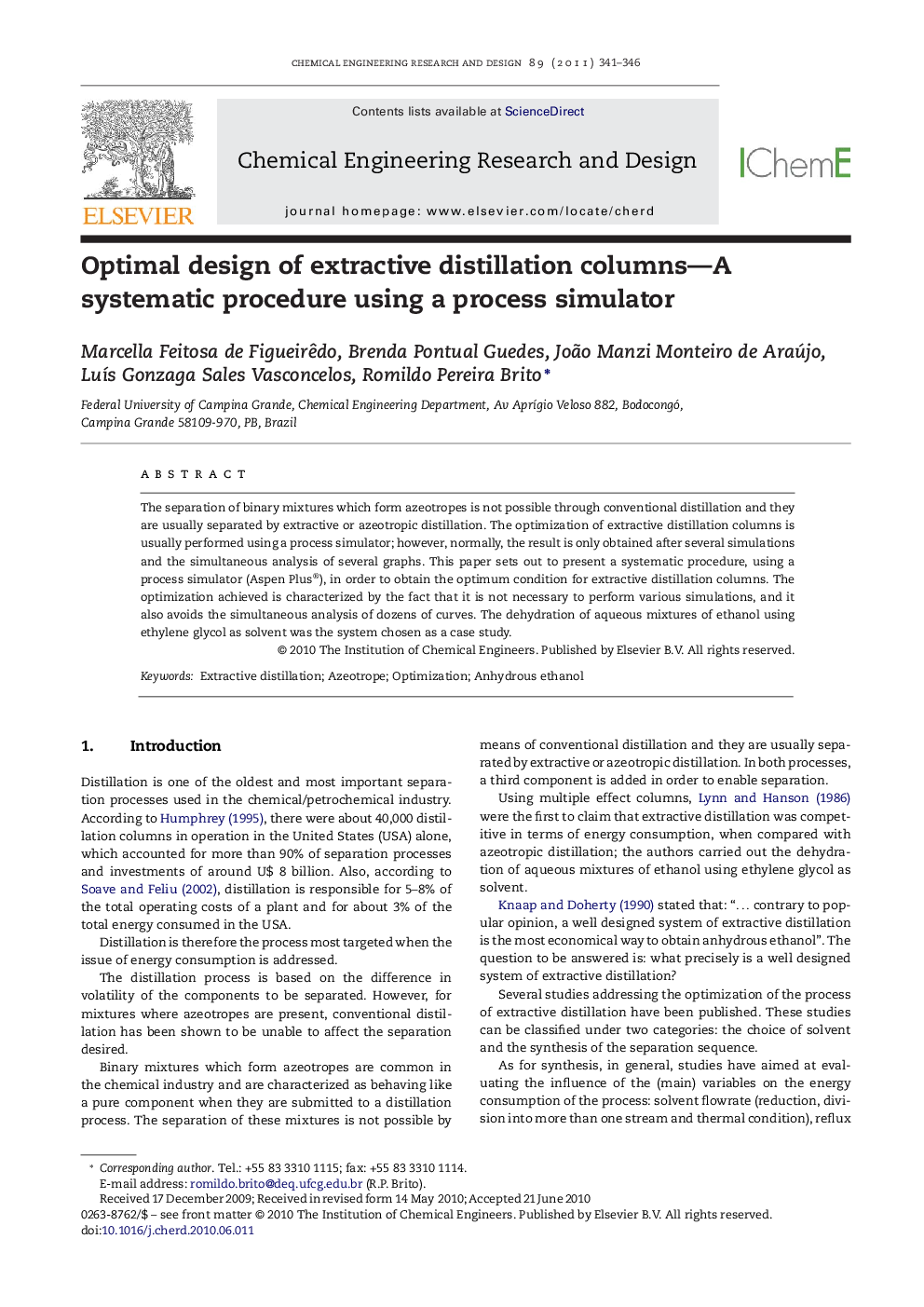| Article ID | Journal | Published Year | Pages | File Type |
|---|---|---|---|---|
| 622130 | Chemical Engineering Research and Design | 2011 | 6 Pages |
The separation of binary mixtures which form azeotropes is not possible through conventional distillation and they are usually separated by extractive or azeotropic distillation. The optimization of extractive distillation columns is usually performed using a process simulator; however, normally, the result is only obtained after several simulations and the simultaneous analysis of several graphs. This paper sets out to present a systematic procedure, using a process simulator (Aspen Plus®), in order to obtain the optimum condition for extractive distillation columns. The optimization achieved is characterized by the fact that it is not necessary to perform various simulations, and it also avoids the simultaneous analysis of dozens of curves. The dehydration of aqueous mixtures of ethanol using ethylene glycol as solvent was the system chosen as a case study.
Research highlights▶ The number of plates, the positions of the feeds (azeotrope and solvent), the reflux ratio and solvent flow rate are included as decision variables. ▶ The constraints of the process (compositions) are considered. ▶ An objective function is defined. ▶ We obtain a formal optimization.
